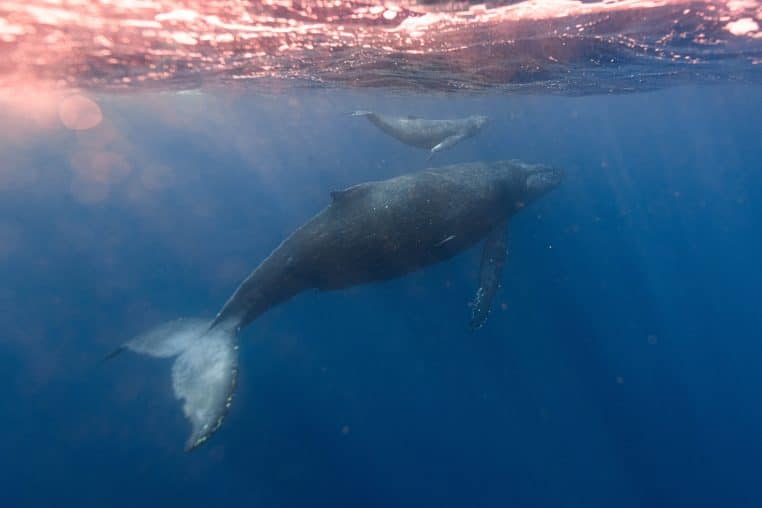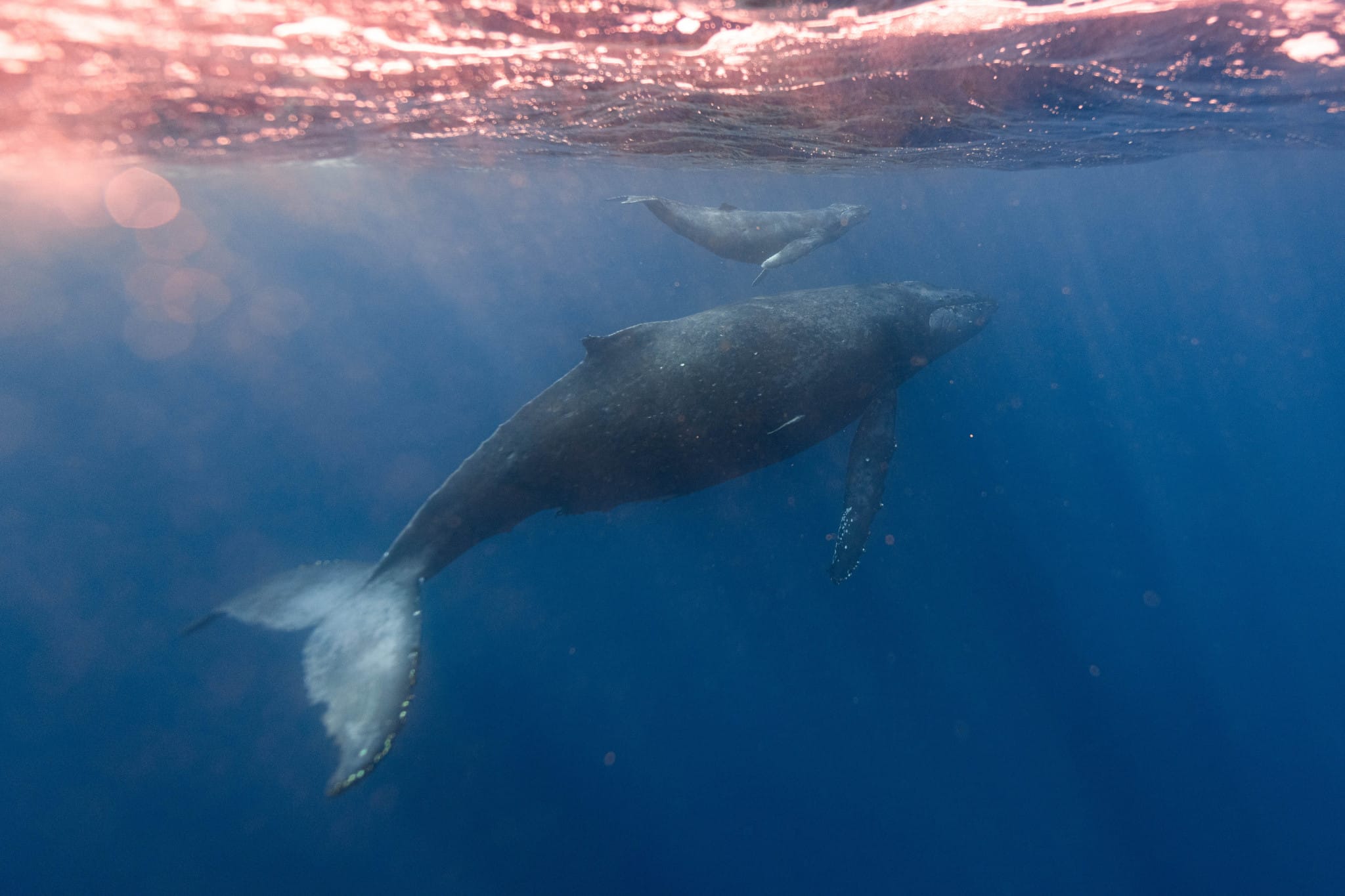A recent study has revealed surprising DNA profiles of North Atlantic blue whales. An achievement that represents a major advance in science. This discovery indicates the possibility of the existence of hybrid whales.

>>> Read also: Good news: Humpback whale numbers have almost recovered!
Hybrid offspring
In the fascinating world of marine genetics, a recent study published in the journal Conservation Genetics has revealed previously unsuspected secrets in the genome of blue whales, the largest mammals on the planet. This exploration revealed a captivating discovery: the presence of fin whale DNA hidden in the genome of these majestic sea creatures.
This unexpected finding, which represents about 3.5% of their total genetic code, opened a window into the surprising mating between blue whales and fin whales, as well as the existence of their hybrid offspring. Scrutinizing North Atlantic blue whales has been a revelation for researchers.
The discovery of this fin whale DNA hidden in its genome has revolutionized previous knowledge about this iconic species. It also confirms the remarkable ability of blue whales and fin whales to reproduce intermittently, leading to the emergence of hybrids with unique genetic characteristics, resulting from a complex mixture of the DNA of the two species.
Even more surprising is that these hybrids, previously thought to be sterile, have been discovered capable of reproducing. A previous study found that these hybrids can produce offspring, mostly blue whale DNA, with a slight trace of fin whale DNA. This phenomenon, known as introgression, has opened new insights into whale reproduction and genetics, challenging our previous knowledge of these majestic sea creatures.
These revolutionary discoveries are not just scientific curiosities; It also highlights the critical importance of understanding whales' reproductive and genetic processes to ensure their long-term conservation. The complexity of these genetic interactions between blue whales and fin whales highlights the need for continued research to better understand these phenomena.
This in-depth understanding is essential for developing effective conservation strategies to protect these iconic species and their valuable genetic diversity. It also reminds us of the critical importance of preserving these majestic sea creatures for future generations. By continuing to explore the secrets of their genomes, we will be able to better protect these ocean gems and preserve the delicate balance of our marine ecosystems.
Introduction, the new scientific basis
The mystery of the incursion between blue whales and fin whales arouses the curiosity of scientists. Mark Engstrom, co-author of the study, emphasizes the unidirectional nature of this phenomenon, stressing that fin whales did not inherit blue whale DNA. This observation raises questions about the mechanisms underlying reproductive asymmetry.
Engstrom suggests that only blue whales seem able, or even willing, to breed with these hybrid whales. This peculiarity raises another question: why does introversion occur in one direction? One hypothesis put forward is the difference in numbers between the two species, with fin whales being more abundant than blue whales, which may influence the trend of introduction.
The uniqueness of fin whales and blue whales appears to be limited to the North Atlantic Ocean, adding a layer of mystery to this phenomenon. Engstrom explains that according to current knowledge, this genetic interaction remains restricted to this region. However, the exact reasons for this geographical restriction remain unclear, prompting researchers to deepen their investigations.
Although there is no direct evidence of their negative impact on blue whales, Engstrom has reservations about continued isolation. It is feared that this process will reduce the genetic diversity of these whales, thus harming their ability to adapt to contemporary environmental challenges. Among these challenges, climate change, amplified by human activities, is of particular concern.
By changing the genetic profile of blue whales, the introduction of blue whales could make them less resilient to these disturbances, putting their long-term survival at risk. These concerns highlight the importance of carefully monitoring the evolution of these genetic interactions and taking steps to protect the genetic diversity of blue whales, which is essential for their survival in a constantly changing environment.
>>> Read also: Australia: The fate of the three whales missing in a river infested with crocodiles is worrying!

“Hardcore beer fanatic. Falls down a lot. Professional coffee fan. Music ninja.”






More Stories
SALES / PHOTO SALES – Nikon D850 “5 Star” Bare Body Photo Body at €2,539.00
Discovering a new turning point under the Antarctic ice sheet! What are the consequences?
Record number for an insect!